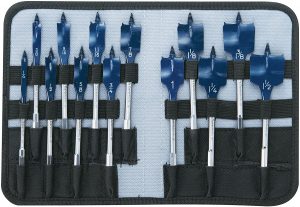
Do you want to mount a new TV, add a new light fitting, or install other kinds of equipment that require running cables throughout your home?
Although this might seem daunting, it’s fairly simple as long as you have the right tools, follow the correct processes, and observe proper safety precautions. If you’re interested to know how, read our step-by-step guide below.
Pre-Step Requirements: Running Cables Through Walls (Safety Measures)
Before starting this project, you should follow some safety precautions to prevent any accidents or wiring damage. Always check with local building inspectors before doing any electrical work so you’re certain that you’re complying with local codes.
If you have done the necessary precautions, our team will now get you through how to safely run cables, with the following steps in order.
Check Behind Your Walls
Before running any cables, know what’s behind your walls. Use a stud finder all around the area where you plan to put the cables so you can determine the correct position for the electrical box.

Check for any fireblocks that could restrict cable access. You will drill holes through them if they’re getting in the way. Also make sure there are no electrical wires or plumbing pipes behind the wall you’re cutting through.
Inspect Your Cables
Next, inspect the cables you’ll be using. Make sure they are in perfect condition (without any cuts, tears, or damages) before running them through the wall. Otherwise, this could pose as a safety hazard on your hands.
Check the Circuit Capacity
It’s also important to check how much power your electrical circuit can handle.
Overloading a circuit can cause the wiring to overheat or melt, and it could even lead to a huge fire. If you’re unsure, it’s always best to consult a professional electrician to help you out.
Switch Off the Power
Lastly, turn off the electricity at the breaker panel before starting electrical work.
Inform anyone with access not to turn it on while you’re working on the project. For added safety, you should also check that the circuit is completely dead with a voltage tester.
How to Safely Run Cables at Home
Materials and Tools
- Stud finder
- Pencil
- Voltage tester
- Level
- Drywall saw
- Drill, drill bits, and spade bits
- Fish tape
- Electrical tape
- NMB Cable
- Stiff wire or coat hanger
12 Easy Steps to Safety Run Cables
1. First, decide on the location of your new device, and determine whether you’ll be powering it from an existing outlet or from the breaker panel.
2. Measure the length of NMB cable you need based on your wiring path.
3. Turn off the electricity. You can use a voltage tester to double check if the power is shut off at the outlet or breaker.

4. Use a stud finder to ensure you’re not placing your device on a wall stud. Mark the position of the electrical box on your wall with a pencil. Use a level to make sure everything’s straight.
5. Drill a hole through the ceiling or on the floor/baseboard, depending on your wire path. Then, insert a stiff wire through the hole you just cut.
6. Using a drywall saw, cut the outline of your electrical box, and run the cable through it.
7. Go to your attic or basement and locate the beam that’s adjacent or next to the stiff wire. In an attic, this is called the top plate, but in a basement, this is the bottom plate.

8. Using a spade bit, drill a hole through the plate that’s directly above (or below) the electrical box.
9. Insert fish tape through the drilled hole, pushing it through until it extends out of the drywall hole.
10. Return to the electrical box wall opening and uncoil the appropriate length of NMB cable (preferably with an excess of 2 feet). Hook the wires through the loop of the fish tape and wrap electrical tape around them for a smoother passage through the plate hole.
11. Have someone feed the cable through while you pull on the fish tape in the attic or basement. If there is a fire block between wall studs that gets in the way, drill a hole through its center to accommodate the cable.
12. Run the cable through the next cavity location and out to the next wall box opening. Screw on the brush plate and plate cover, and you’re done!
Conclusion
Our team hopes that this guide helped you learn how to safely run cables through your walls. Before proceeding with the steps, our team strongly suggests taking safety precautions on electric wiring [1] first to avoid any accidents. After which, you can follow these steps one by one.
The post How to Safely Run Cables at Home appeared first on The Product Analyst.
from The Product Analyst https://theproductanalyst.com/safely-run-cables/
No comments:
Post a Comment